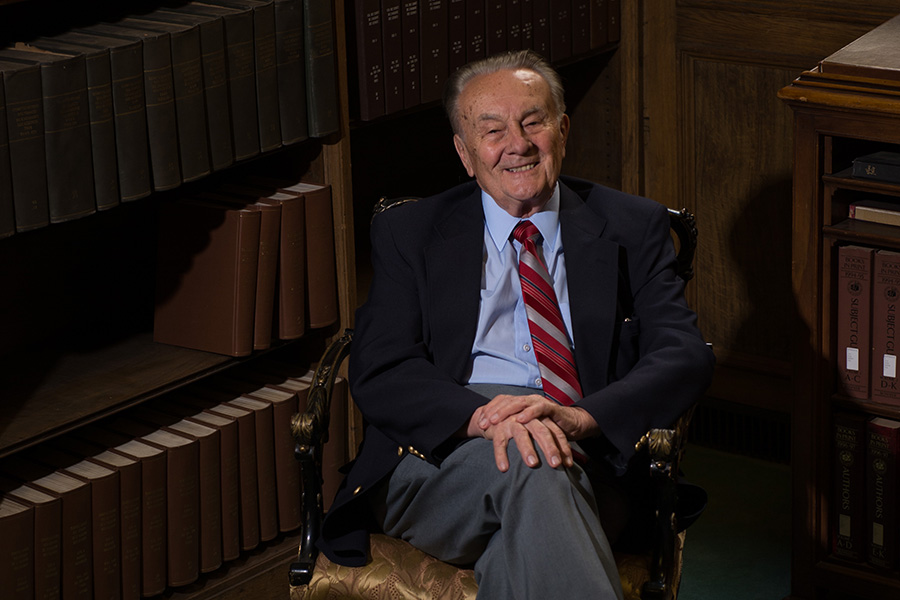Brilliance Overcomes Barriers
Josef Dadok was ahead of his time. Kindergarten at age 3. Constructing electric motors from scratch just a few years later. Building the first nuclear magnetic resonance spectrometer, operating at 40 megahertz, in Czechoslovakia in the 1950s, in spite of having no access to spectrometers built in the United States or Japan because he was working behind the Iron Curtain.
Because of Dadok’s roots in Eastern Europe, there were additional barriers as well. Conscripted into the German army in World War II. Losing academic positions in Communist Party purges. Being forced to work in factories as punishment for mysterious offenses.
During one of the periods when political pressure in Czechoslovakia eased, Dadok began a trip that changed the trajectory of his career — a visit to a NMR conference hosted by the Mellon Institute of Industrial Research in Pittsburgh. His participation in the conference prompted an offer of a one-year fellowship at Carnegie Mellon, and Dadok sent for his family to join him in Pittsburgh for much of the year.
The timing was perfect. The Soviets invaded Czechoslovakia while the Dadok family was in the U.S., and their home country later tried, convicted and sentenced the family to prison time in absentia.
By then, Dadok was a full-time fellow at CMU, later to become the technical director of CMU’s NMR center and a full professor of chemistry. In 1976, he and a colleague built a 600 MHz spectrometer at CMU, at the time the most powerful version of the instrument in the world.
Dadok retired in 1997 and died in 2024. But his contributions were formally recognized in the Czech Republic in 2013, when the Central European Institute of Technology named its new NMR center in his honor.
